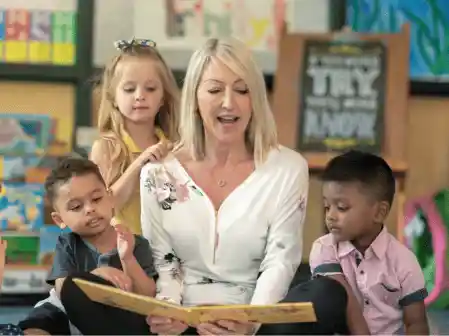5 Tips for End-of-Year Reports

Celebrating the Journey: 5 Tips for Meaningful End-of-Year Reports
As the end of the school year approaches, many early childhood educators are pulling out notebooks, digital docs, and mental snapshots to begin a cherished (and sometimes daunting) tradition: writing end-of-year reports.
These reports aren’t just checklists or academic summaries—they’re reflections of each child’s growth, personality, and journey. They hold stories, relationships, and moments only you, the educator, had the privilege of witnessing.
Here are five thoughtful tips to help you write reports that truly capture the heart of each child’s experience—while making the process more manageable and joyful.
1. Use Observations as Anchors
Those quick notes jotted on sticky pads, daily logs, or even mental observations you’ve been storing all year? They’re gold. Anecdotal notes offer authentic snapshots of each child’s progress over time. Organize your notes by developmental domains (e.g., social-emotional, cognitive, physical, language) to easily identify patterns and growth. Look for stand-out moments that illustrate a child’s unique learning style, interests, or “aha” moments.
2. Lead with Strength-Based Language
How we describe children matters. A strengths-based approach centers on what a child can do, how they’ve grown, and the positive qualities they bring to the group.
Instead of, “Piper struggles to sit still during group time” try, “Piper is learning to manage her energy during group time. Using a fidget tool or a wobble cushion is often helpful for her.”
Even when sharing challenges or areas for growth, pair them with encouragement, progress, and insight about supportive tools or strategies.
3. Let Your Relationship with the Child Shine Through
You know these children deeply, as whole people. Let that richness come through! The way Arjun comforts a crying peer, the way Naomi lights up when she talks about dinosaurs, or how Malik leads during block play: these are the observations that truly resonate.
“Last week during Morning Meeting, Aaliyah asked, ‘Can we read the book about feelings? I want to show Marcus the part where the bear gets mad but takes a deep breath.’ This moment captured Aaliyah’s growing emotional awareness and her natural empathy. Over the past few months, she’s become a leader in our classroom, often helping to solve problems or reminding friends of our self-regulation strategies.”
Including specific anecdotes helps reflect personality and growth. A single quote or story can bring your whole narrative to life. Don't hesitate to include photographs or examples of children’s work – these artifacts help families connect more deeply with their child’s experience and growth.
4. Keep it Clear, Warm, and Family-Friendly
Remember, your audience isn’t just administrators. Aim for clear and concise language that celebrates each child and invites families into the story of their child’s year.
Avoid jargon when possible (or briefly explain it). For example, “Ava is developing her fine motor skills and frequently chooses activities like using tweezers to pick up pom-poms or drawing detailed pictures.” Think of your tone as a warm conversation, with the goal of making families feel seen, informed, and celebrated.
5. Focus on Progress, Not Perfection
Development is not linear, and every child’s timeline is different. Emphasize growth over benchmarks. Whether a child made leaps or slow-and-steady gains, it all matters.
-
“Has shown increased confidence in…”
-
“Is developing their ability to…”
-
“Consistently demonstrates curiosity in…”
Framing children’s development as part of a continuum highlights learning as a journey, not a race.
Final Thought: Turning Moments into Meaning
Writing thoughtful reports requires a tremendous investment of time, but it’s a task that is also an opportunity to celebrate and honor the messy, magical process of learning in early childhood.
You’ve seen these children take brave steps, ask big questions, and grow in remarkable ways. So, take a breath, grab your notes, and let your deep knowing guide you. You’ve been watching their story unfold all year. Now it’s time to tell it.
Resources
Quick and Easy Notes: Practical Strategies for Busy Teachers (Celeste C. Bates, Stephanie Madison Schneck & Hayley J. Hoover, NAEYC)
Using Observation to Guide Your Teaching (Dawn Petitpas & Teresa K. Buchanan, NAEYC)

Christine Murray is an Early Childhood Education Specialist with Becker’s Education Team.
As an educator, coach and leader, Christine is inspired by the curiosity, joy and wonder that children so generously model for us. She earned her M.A. in Innovative Early Childhood Education at the University of Colorado Denver and loves collaborating with and supporting others in the field. Grounded in relationships and guided by empathy, Christine is always learning, connecting and creating.
